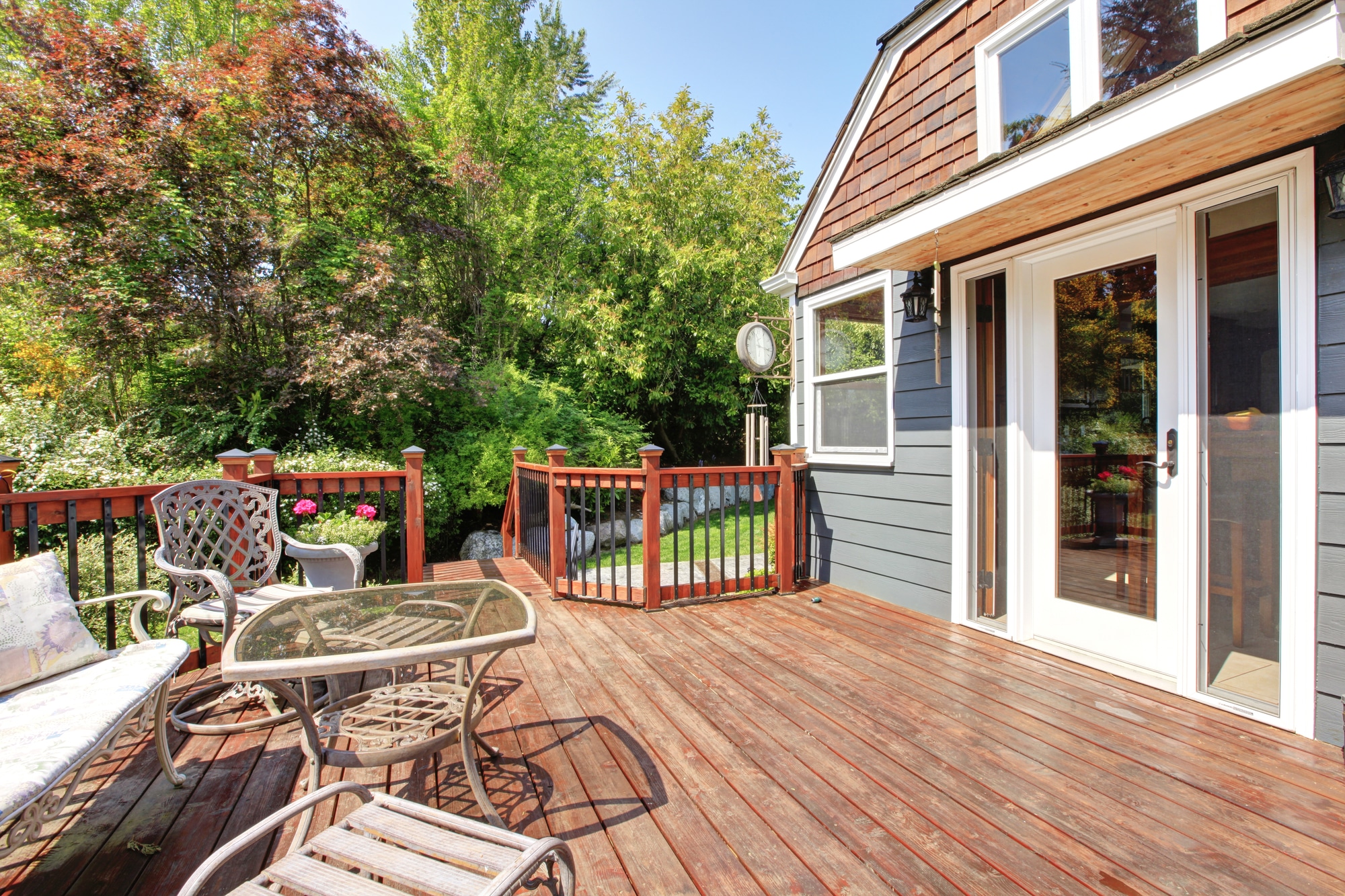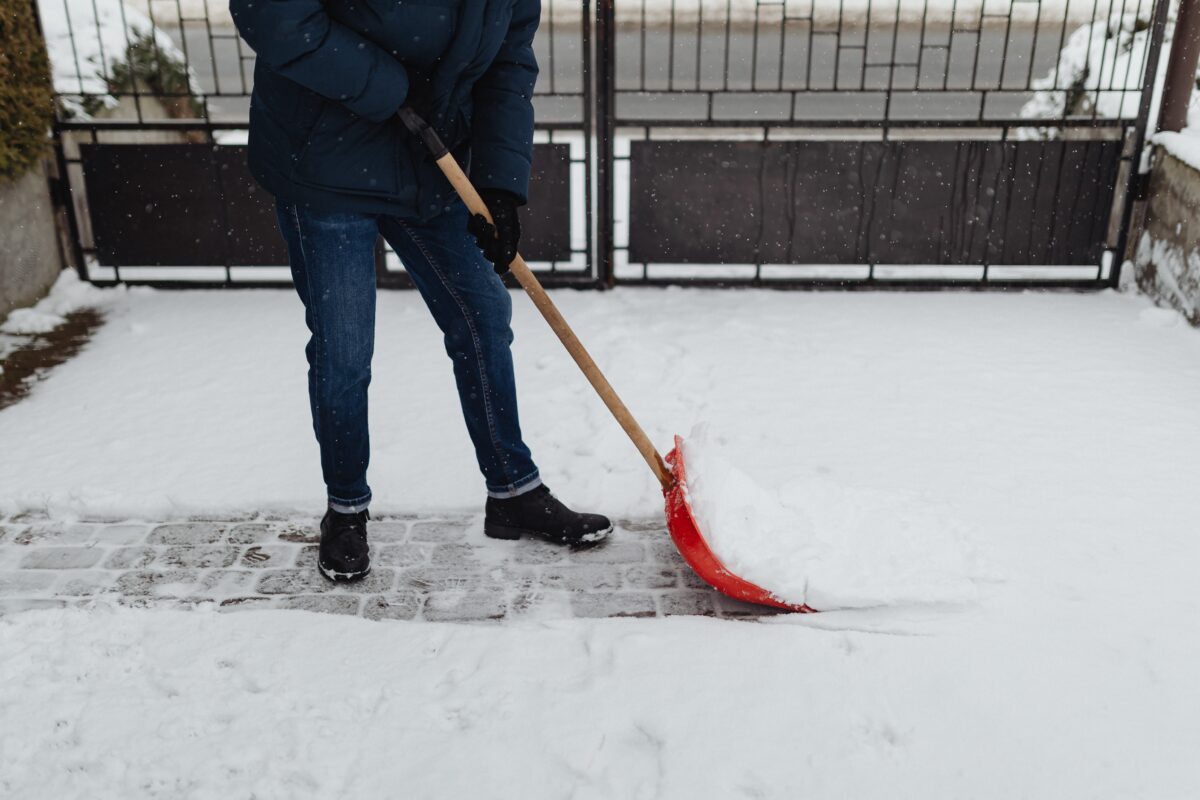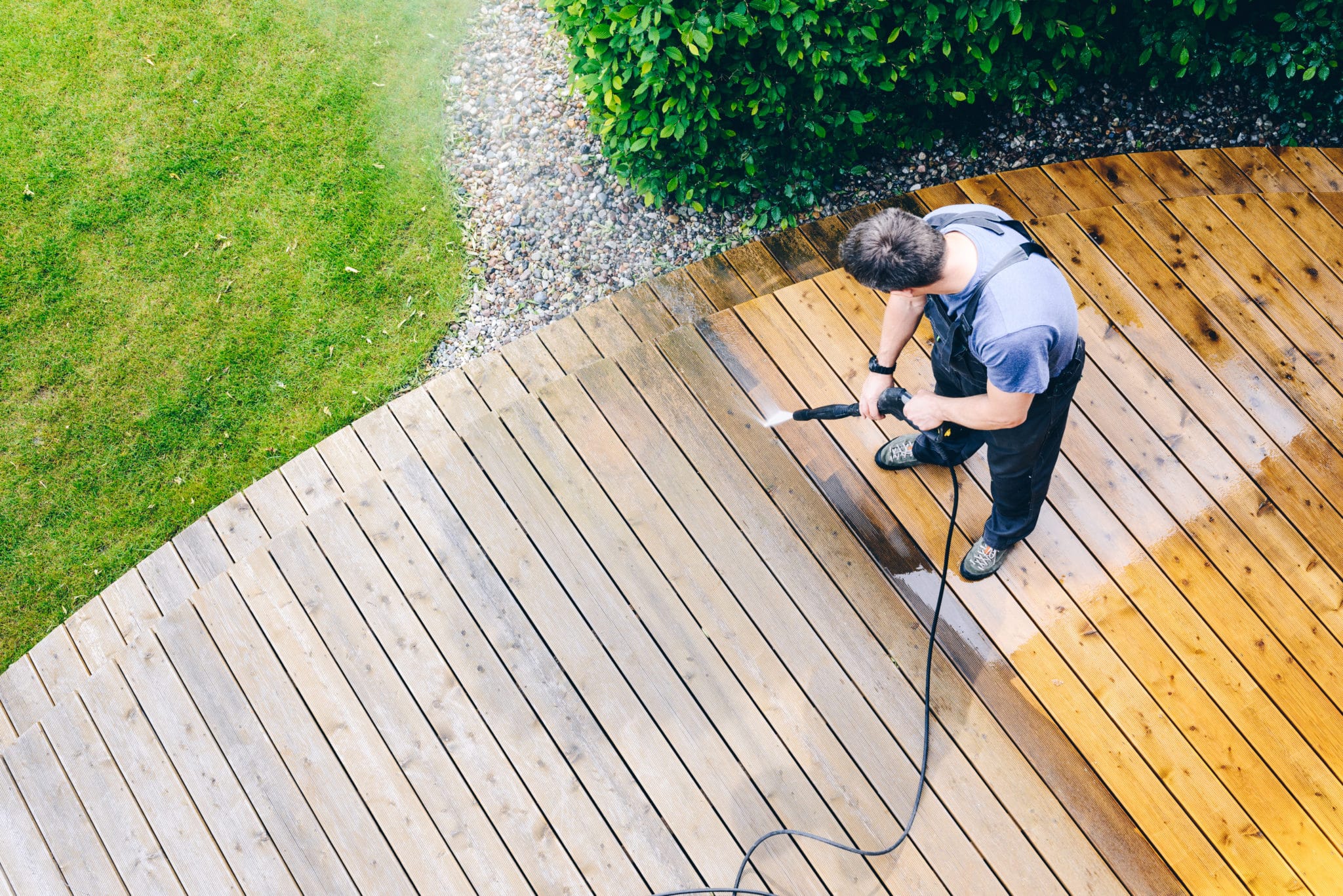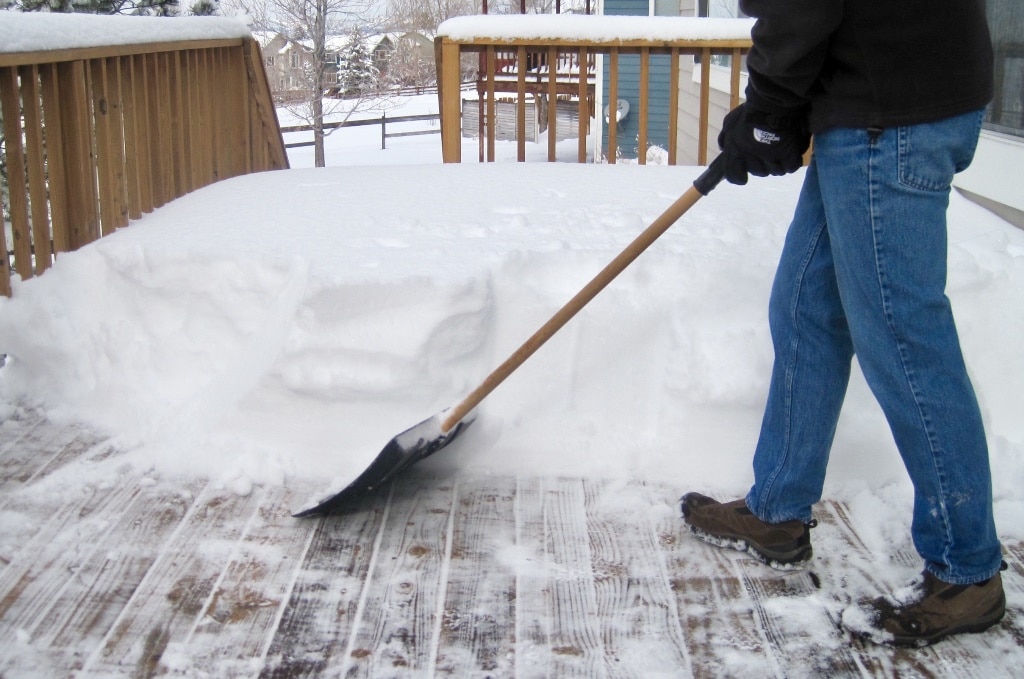With winter nearly upon us, it’s time to prepare your deck surface. A wooden deck can look great, but it’s susceptible to winter weather damage and requires maintenance to keep it in top condition and prevent wood rot.
The nature of wood decking requires regular maintenance; the wood surface is likely to erode and warp due to the swelling and contracting during summer and winter, but there are several ways you can slow this process down.
Composite decks are a great, sustainable solution for areas vulnerable to temperature changes, blowing wind, or freezing. They do not warp, split, or crack under extreme climatic conditions. Composite decking material makes the deck moisture-resistant. Its maintenance requires only sweeping or spraying, which is easy even in winter months.
Read on to learn how to protect your wood deck surface, deck furniture, wooden deck boards, and wood finish and how to prepare your deck for snow and ice removal to keep your deck structurally sound.

1. Year-Round Inspections
Many homeowners think a deck is one-and-done. You must pay attention to the state of the wood decking all year round, not just in the winter season.
If you notice mold and mildew on the deck regularly, you can clean it away and prevent it from causing structural damage. Using oxygen bleach to remove dirt, mold and mildew will keep the deck strong. Likewise, if you see any damage that has been incurred from daily wear and tear, repairing it before it becomes a magnet for rot will help with winter deck protection when the winter weather comes around.
It’s also a smart idea to remove debris, like leaves and airborne trash, to keep your deck’s surface free of rot or standing water– it’s a simple solution to keep its beauty. If you have an outdoor fireplace that remains outdoors for the winter, keep it clear of leaves and other debris. Clear away ice and snow consistently throughout the winter.
These deck maintenance checks should be carried out every month, so put a date on your calendar year-round or set a reminder on your phone to stay consistent.
An annual varnish is also an excellent idea to help with winter deck maintenance. Many people are tempted to start this deck maintenance as soon as the winter weather gets better but don’t fall into that trap. Wait until the end of summer when the wood has fully dried before you apply a top coat to your wood surface. Otherwise, moisture can hurt the deck’s finish.

2. Keep Your Deck Clean
This is another important bit of year-round deck maintenance. Debris and leaves begin to decay, and this transfers to your decking if you don’t regularly sweep them away.
Special wood deck brushes are available to remove debris, and it’s also advisable to stay away from using common household cleaners and buy at least one cleaning product that’s specifically designed for decking, like a high-quality sealant. This will kill algae growth and remove mold that has accumulated over time and provides ultimate protection.
Always clean the deck boards thoroughly before you apply any product. Remember, a high-quality sealant is just an added barrier against the elements; you have to keep up with deck maintenance all year round.

3. Remove All Furniture, Pots, and Planters
When winter sets, you must clear your deck so it’s completely open all winter long. Planters (planting bulbs) and pots (potter plants) all create spaces where dampness, mold, and mildew can accumulate on a deck’s surface. Water gets underneath these types of items, and you can end up with patches of mold and mildew on your deck.
It’s best to keep the furniture inside rather than cover it on the deck for the same reasons. Store deck furniture inside so the furniture itself does not disintegrate. Come springtime, your deck and its accessories will be as good as new!
4. Never Shovel your Deck With Metal
When the winter season comes around, and the snow begins to fall, there is no doubt you’ll be tempted to get a big snow shovel or snow blower out and remove snow from your deck and pathways. Be careful not to use a metal shovel – only a plastic shovel – as this will inevitably dent and chip the delicate wood surface of your decking. Keeping the deck’s finish intact to protect the wood is vital.
Not only do chips harbor germs and are the perfect breeding ground for rot, but they also ruin the surface appeal, so we’d advise always using a plastic, rubber or silicone shovel to protect your wood deck.

5. Always Go With the Grain
When you’re removing snow from your deck, don’t go against the grain of the wood. Going in the same direction as the grain will protect the deck surface.
Going against the grain is likely to cause damage over time. If you always move in line with the grain, your decking will last longer. It may seem like a small measure, but taking care of the details helps to make sure the delicate wood is better protected throughout the winter months.
6. Don’t Use Salt
The number one mistake that people make during the winter months is using rock salt on their decks. Salt sucks up moisture and affects the natural contraction and expansion of the wood, leading to corrosion and providing the ideal environment for decay. Using natural products to melt snow is a safer bet.
Traditional wooden decking can erode quickly, especially with the use of an ice melt, and while it may be less expensive upfront than composite decking, the amount of money you’ll need to spend on upkeep eventually balances this out.
Wooden decking nearly always needs to be replaced at least twice as soon as composite decking. Overall, you’ll save money and hard work if you choose a composite deck.
Give Prince William Home Improvement a call at 703-492-1294 for a free quote.

